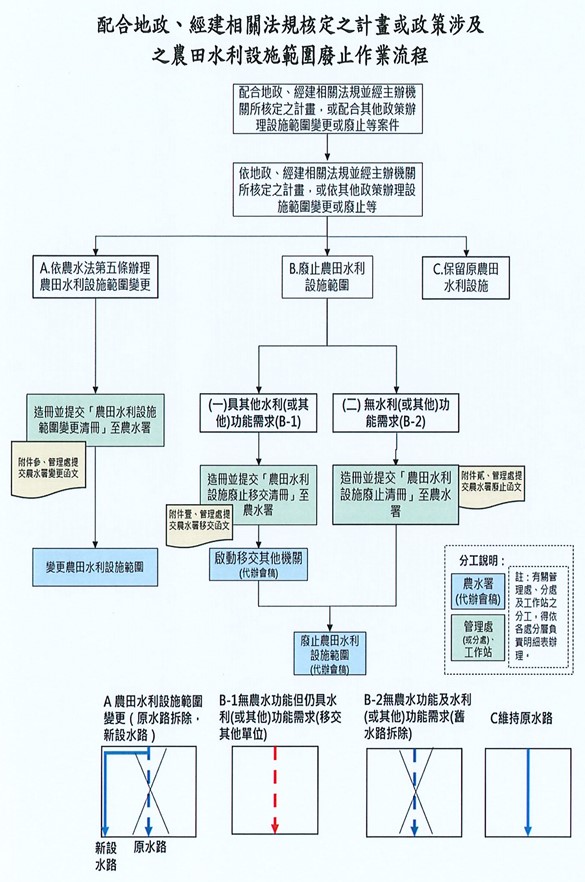To align with land administration policies, the management offices of the Irrigation Agency must thoroughly inspect water channels that no longer serve irrigation or drainage functions for farmland. Following the operational process and verification with local authorities, these waterways can be designated as non-irrigation facilities or as having no irrigation functions.
Irrigation Act
Article 5:
1. The competent authority shall delineate the scope of irrigation facilities, manage and maintain them, and announce them publicly; the same applies to any changes or decommissioning. In areas involving indigenous lands, the competent authority shall consult with the central indigenous authority for public announcement.
2. The competent authority will work with the central water conservancy agency to set rules for defining, managing, maintaining, modifying, or retiring agricultural irrigation and water facilities, along with other related issues.
Regulations for Management of Farmland Irrigation and Drainage Facilities
Article 7:
1. The competent authority may change the scope of irrigation facilities under the following circumstances:
- The construction of new irrigation facilities or the alteration, partial damage, destruction, or removal of existing irrigation facilities.
- Changes in topography, landscape, or other geographical environments.
- Compliance with water conservancy, land administration, or other legal provisions.
2. The competent authority may decommission irrigation facilities that no longer exist within the designated scope or no longer possess irrigation or drainage functions for farmland.
3. Before decommissioning as per the preceding paragraph, the competent authority shall consult with relevant authorities. If the facilities have other functions post-decommissioning, the competent authority shall compile a list and transfer management and maintenance responsibilities to the relevant unit.
